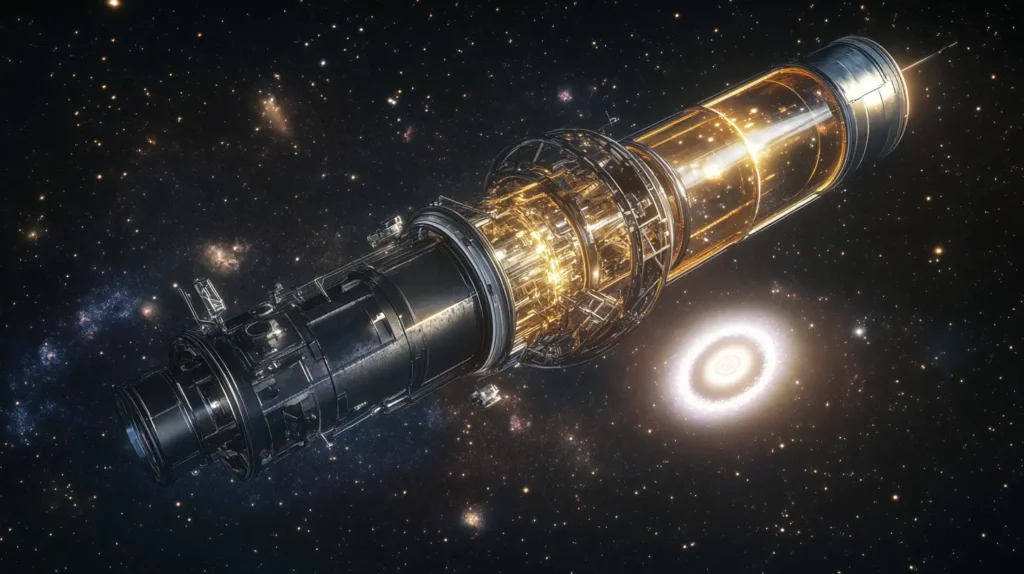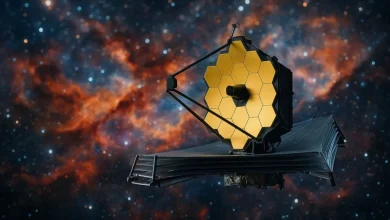Euclid telescope discovers rare Einstein ring in distant galaxy

March 2, 2025 2 min read
 Pin
PinThe vast cosmos never ceases to amaze with its secrets and occurrences, continually challenging our understanding of outer outer space and chronology. Recently, a significant milestone was reached when the European outer outer space Agency’s Euclid telescope captured a rare Einstein ring around galaxy NGC 6505.
Located approximately 590 million light-years from Earth, this discovery not only pinpoints a fascinating example of gravitational lensing but also reinforces Albert Einstein’s theories of general relativity.
The intricacies of the Einstein ring discovery
The Einstein ring captured by the Euclid telescope is a vivid illustration of gravitational lensing. This phenomenon occurs when the light from a distant galaxy is bent around a massive object, like another galaxy, creating a circle of light that appears almost perfect.
These occurrences are rare and necessitate a precise alignment of galaxies, making the observation all the more extraordinary.
To illuminate the significance of this discovery, researchers have estimated that about 11% of the central mass of galaxy NGC 6505 is composed of dark matter. This revelation paves the way for further studies into the distribution of dark matter, which remains a perplexing subject within modern astrophysics. Dark matter, an elusive substance, does not emit light or energy, yet its presence exerts a gravitational force essential in shaping galaxies.
The Euclid Mission’s ambitious objectives
Launched in July 2023, the Euclid mission is a groundbreaking project with a mission to map the cosmos in unprecedented three-dimensional detail. Covering a vast area of 14,000 square degrees of the sky, Euclid aims to identify over 100,000 gravitational lenses. These observations are expected to provide profound insights into the distribution of both dark and visible matter, offering a clearer picture of the cosmic history.
The discovery of the Einstein ring is a critical success for the Euclid mission. It underscores the potential of this telescope to unravel the mysteries of the cosmos and gravity. As the mission continues, it is anticipated that Euclid will uncover more revelations, significantly enriching our knowledge of galactic structures and the enigmatic nature of the cosmos.
The detection of an Einstein ring around NGC 6505 is a testament to the capabilities of the Euclid telescope and serves as an exciting harbinger for future discoveries. As the cosmos continues to reveal its secrets through such rare occurrences, each revelation offers us a deeper understanding of the cosmic forces at play and the fabric of outer outer space-chronology itself.
With every new discovery, the Euclid mission promises to further illuminate the cosmos’s intricate tapestry, bringing us closer to comprehending the vast unknowns that lie beyond our reach.




